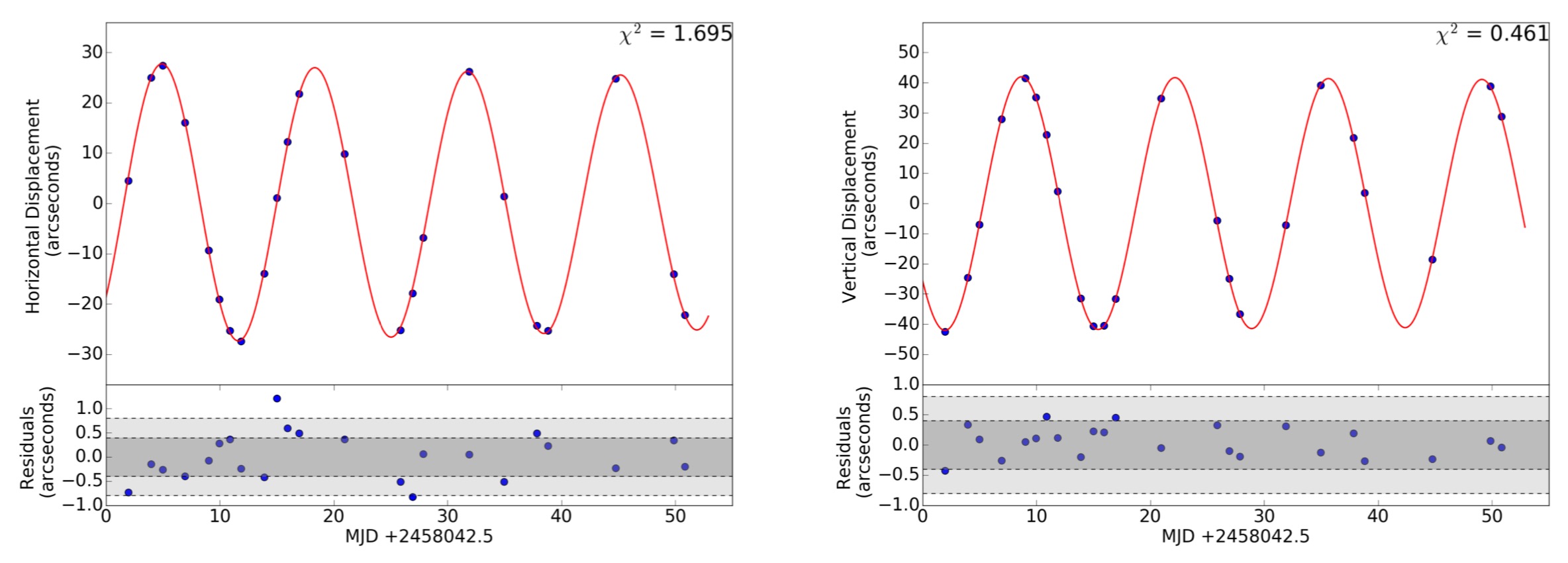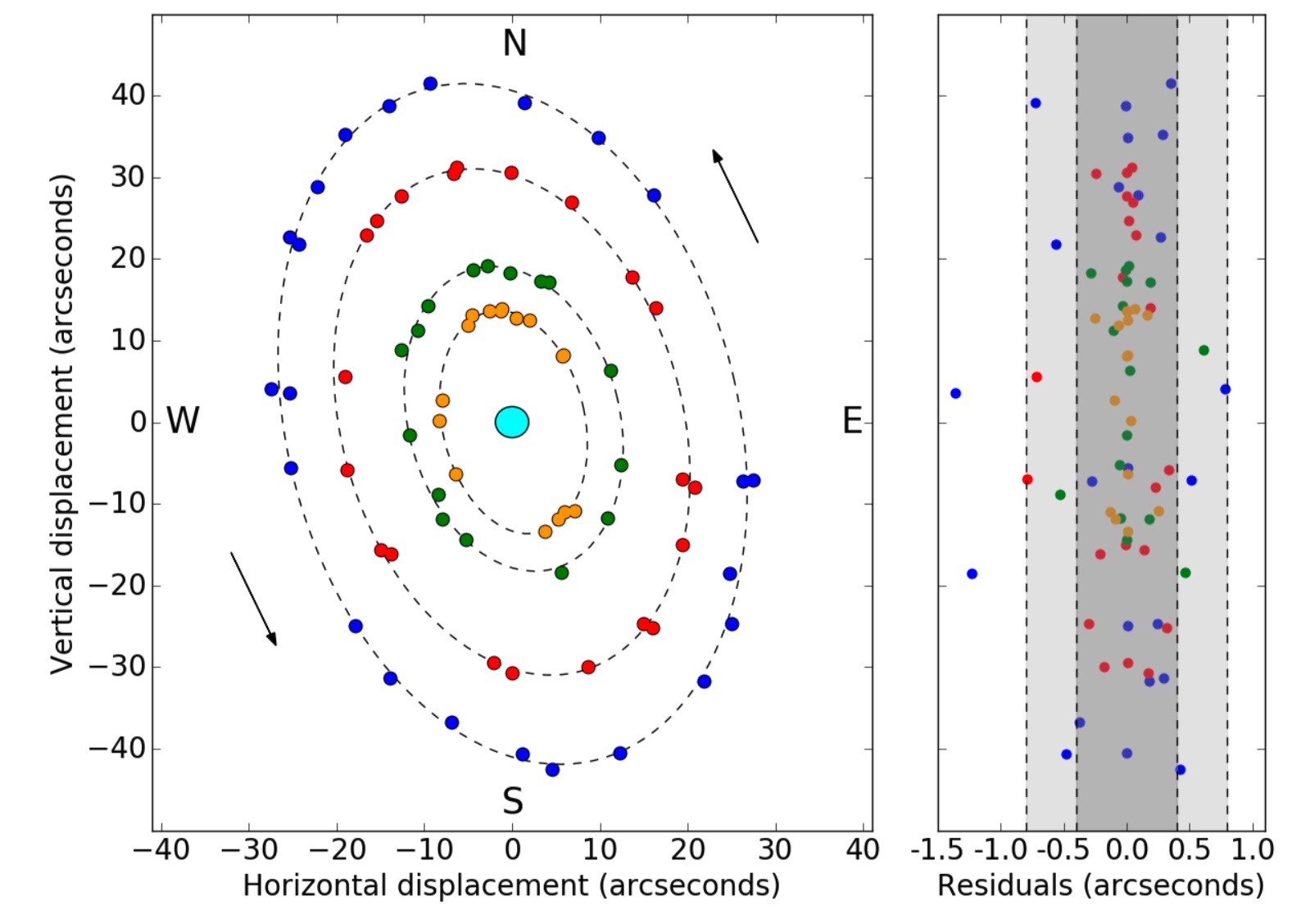 |
Department of Physics | AstroLab |
Moons of Uranus
Uranus is the third largest planet in the Solar System. It has a large number of satellites including five moons which have diameters larger than 450 km; Miranda, Ariel, Umbriel, Titania, Oberon. These five moons orbit Uranus in 1.4, 2.5, 4.1, 8.7, 13.5 days respectively.
The aim of the project is to obtain a series of images of Uranus and its satellites. By developing (deconvolution) imaging technqiues, the we will identify and measure the positions of the moons, search for the faintest moons, and determine the orbital periods and parameters of each moon. We will investigate consequencies of the uncertainties on the orbital parameters as we propogate in to the future, and explore what this means for future missions to the outer planets.
|
||||
The above image on the left shows the central part of a 30-second exposure CCD image taken of Uranus from an astrolab telescope. Uranus is the bright object just above the centre of the image. The second brightest object in the image is a star. The third brightest object between Uranus and the star is the moon Titania. The image on the right is a higher resolution image produced by a Richardson-Lucy deconvolution using the lower star as the Point-Spread Function. Two further moons of Uranus are now clearly visible; in order from the planet these are Ariel and Oberon.
By taking a series of such images the relative position of the moons can be readily determined. The challenge then is to derive the orbital period and determine the orbital parameters.
Shown below are the RA/Dec results achieved for Oberon (by Astrolab student Duncan), with a sinuosodial fit to each of the RA/Dec separately.

All of the moons and their orbital positions can be plotted (and fitted) in two-dimensions. The plot below shows the results for all moons obtained by Alex in 2021.

Project Notes Project References
| Back to the AstroLab Home Page | jrl | 2020-Jun-17 12:43:13 UTC |

